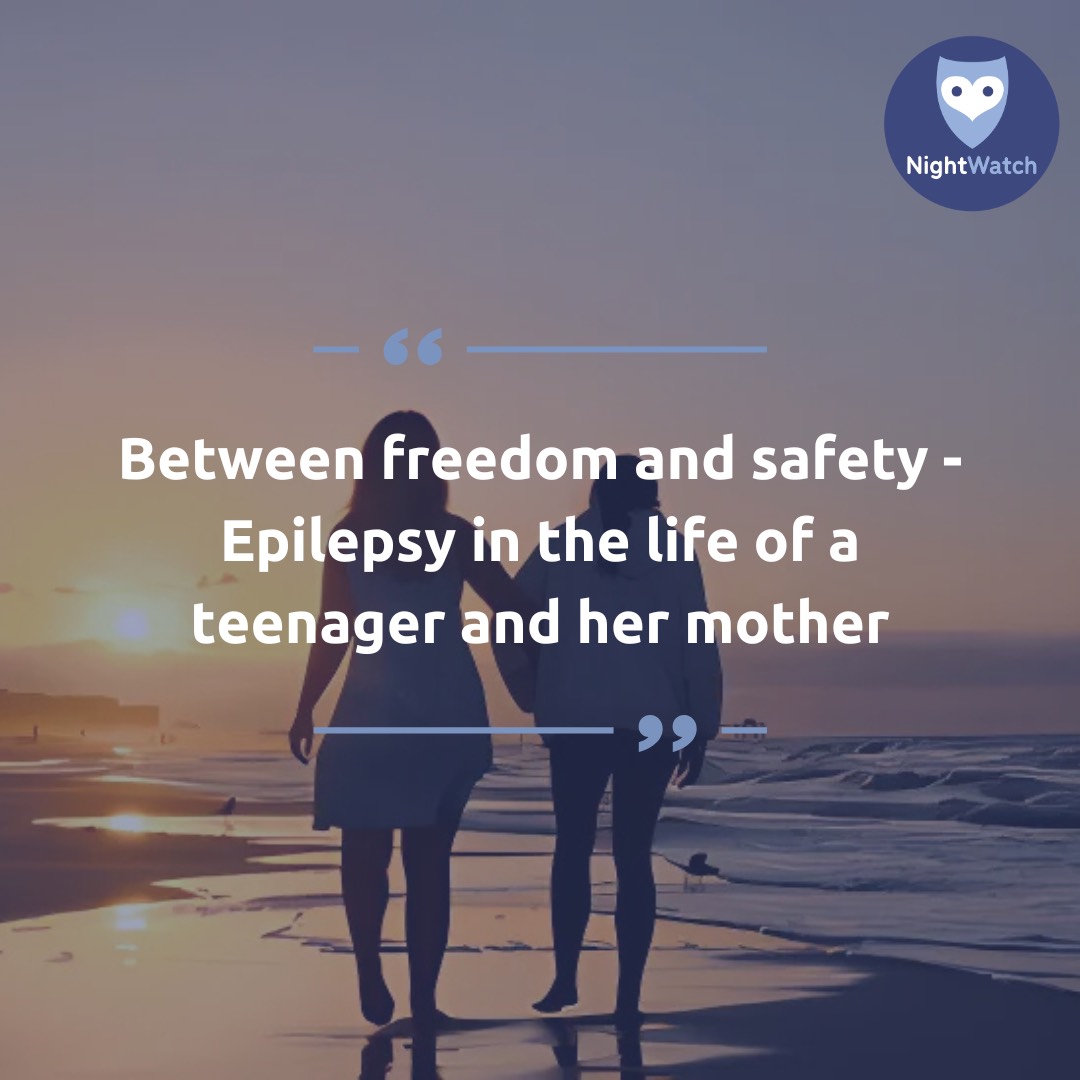How do you let a teenager grow up with freedom when there’s always a chance of an epileptic seizure? In this blog, a mother and her 14-year-old daughter share their story. About letting go, setting boundaries, school trips, and the ongoing search for balance. An honest, relatable, and hopeful double portrait.
From the mother – Letting Go Without Forgetting
Our daughter is 14. She’s in her third year of high school and wants the same things as any other child her age: freedom, independence, and her own life. But she has epilepsy, which makes the journey toward independence a little more complex.
We live near the beach. She loves it — going there with her friends, listening to music, taking selfies. But swimming? That’s not allowed. Not as long as her epilepsy remains unpredictable. The risk is too big. She understands, but it’s still difficult.
She also loves horse riding. Since she was young, she’s been riding ponies every week. But, with heavy hearts, we’ve had to pause that for now. The risk of having a seizure while riding is too dangerous, and the consequences could be severe. These aren’t easy conversations with a teenager who just wants to do what her friends are doing.
Still, we try to give her as much freedom as possible within safe boundaries. Can she bike to school alone? Yes, with a fully charged phone, clear agreements, and a check-in when she leaves and arrives. Going to the city with friends? Yes, as long as we know who she’s with and she stays reachable. Being home alone? Also, yes, as long as we coordinate things properly.
Then there’s the school trip. She was allowed to go, thankfully. But with one condition: I had to go as a chaperone. For her, that felt like a double-edged sword. In the third year of high school, you want to break free and handle things on your own. No mom hovering over your shoulder. It wasn’t ideal for me either, but I understand the school’s perspective. And, to be honest, I would feel uneasy if I weren’t there.
At night, she wears the NightWatch. It gives us as parents a bit more peace of mind, as the system alerts us to possible seizures during the night, not just for her safety, but for our own rest as well.
The biggest challenge remains finding balance. Of course, we want to protect her, but we also want her to live her life. She’s a teenager with dreams, plans, and boundaries she wants to explore on her own. And she deserves to feel free, even with the risks.
It’s a learning process. For her, but definitely for us too. Sometimes we give her too much space, sometimes we hold on a little too tightly. But we keep talking, adjusting, and finding what works because ultimately, we want the same thing: for her to be a kid. With epilepsy, yes, but not limited to epilepsy.
From her daughter – I Just Want to Join In
I’m just a fourteen-year-old girl. Sometimes I almost forget I have epilepsy. And sometimes it’s all I can think about. It’s strange because, on the outside, no one can tell. I feel like myself. And yet, there’s always something around me that others don’t have.
I just want to do things that everyone my age does. Go to the beach with my friends, bike to school, and spend a day shopping in the city. And most of the time, I can — but there are always extra rules. Phone charged, let them know when I leave, who I’m with, and what time I’ll be back? I get it. My parents mean well. But sometimes, it’s just annoying.
Swimming, for example. We live so close to the sea, and everyone jumps in the water on hot days. But I have to stay on the beach. Sometimes, it feels like I’m sitting on the sidelines of my own life. Like, I have to watch while everyone else is just going on. And horse riding… that was really my thing. I could forget everything for a while. But now I have to wait until it’s safe again. That’s hard, even though I know it’s not forever.
And then there’s the school trip… Yeah, I was allowed to go and was happy about that. But my mom had to go too. And honestly, that felt a bit weird. Most of my classmates don’t see their parents for that week. I do. Always nearby, always alert. She did well though, really. Not too intrusive. But still, I just want to go on a trip without worries. Without extra explanations, like everyone else.
At night, I wear the NightWatch, and that helps. It gives me a sense of safety. I know it helps my parents sleep better, and that’s a relief too. Sometimes, I’m afraid that people see me as different. Or feel sorry for me. But I really don’t want that. I’m not my epilepsy. I’m just a teenager with dreams, a big mouth sometimes, and a bit of stubbornness.
And yes, sometimes I have to make extra arrangements or miss out on things. But that doesn’t mean I’m less than anyone else.
My parents really try their best to give me space where they can. And I understand that they’re sometimes scared. I am too. But I want to learn to live with my epilepsy, not against it. And I believe that’s going to work. Step by step. In my own way.
Learning Together, Growing Together
Epilepsy doesn’t make life impossible, but it does require adjustments for parents and children alike. In this story, both mother and daughter show that open communication, helpful tools like NightWatch, and trust in each other make room for more safety, freedom, and understanding.
Because with love, patience, and a little courage, there’s often more possible than you think.
